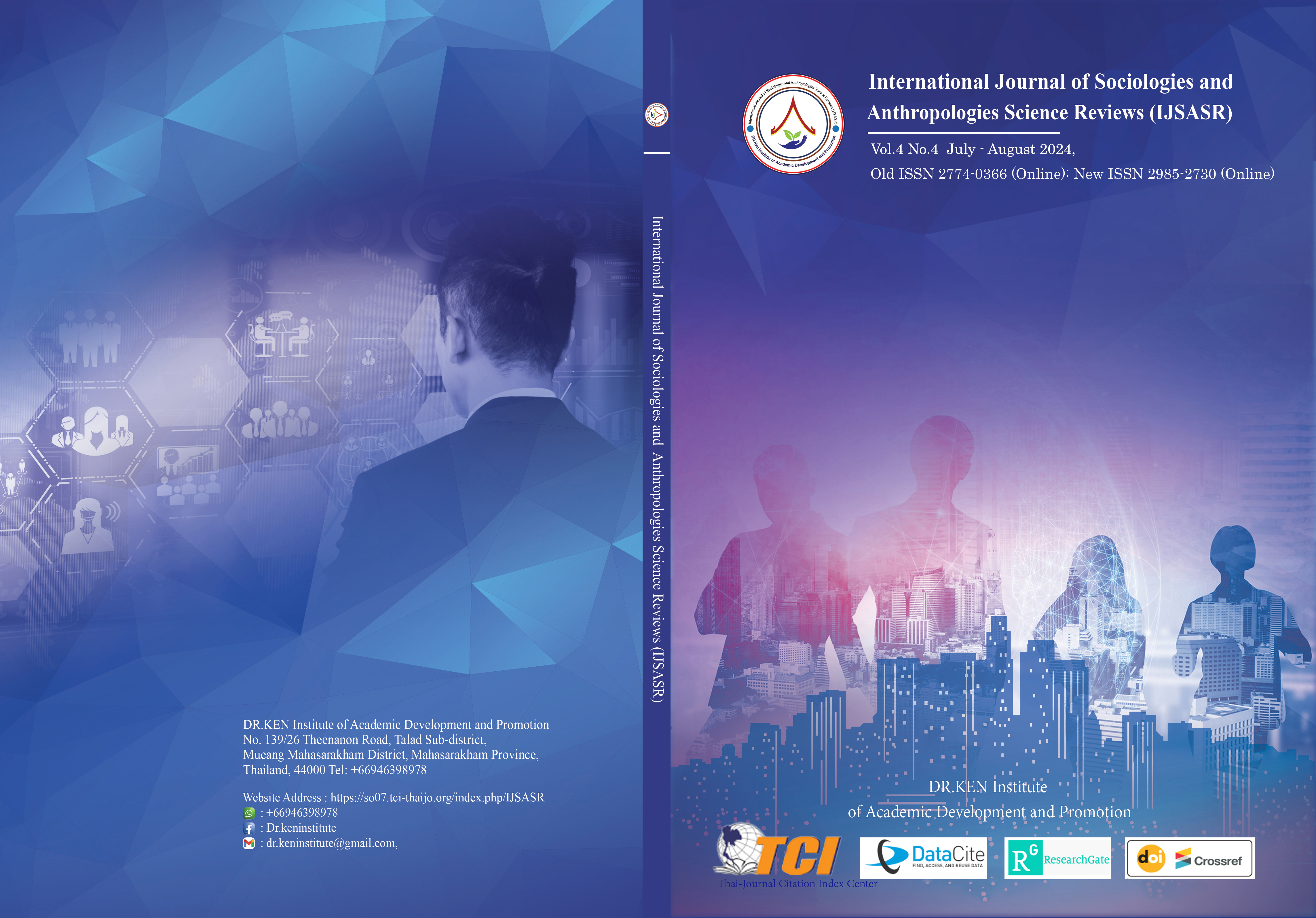An Instructional Coaching Model to Enhance Instructors' Instructional Skills in Vocational Colleges in Nanjing, China
Main Article Content
Abstract
Background and Aims: Instructional skills are the core to improving the competitiveness of vocational colleges. Instructors are essential in driving vocational college change, uniting colleagues, and helping students toward academic success. The primary purpose of this study was to develop an instructional coaching model to enhance the instructor's instructional skills in a vocational college in Nanjing, China. There were five research objectives (1) To identify the optimal instructional skills for vocational college instructors in Nanjing, China; (2) To analyze the need to enhance the instructional skills of instructors in Nanjing, China; (3) To determine the levels of instructional coaching at vocational colleges in Nanjing, China; (4) To propose a model for enhancing instructors' instructional skills in vocational colleges in Nanjing, China; (5) To validate the model to enhance the instructional skills of instructors in vocational colleges in Nanjing, China.
Methodology: The study applied concurrent mixed method research (qualitative and quantitative methods with the same objective), starting with a qualitative literature review and using the literature review analysis results in the quantitative data collection and analysis processes to establish an instructional model for improving instructors' instructional skills in vocational colleges; the research instrument was valid by five experts and reliability testing result was over acceptable levels (>0.70); in the final, the model was validated by 15 experts in qualitative methods with two-orders choices (yes or no).
Results: The results show that instructors in vocational colleges need to have five instructional skills: moral practice skills, professional instructional skills, professional development skills, comprehensive education skills, and social service skills. Based on the questionnaire to find the needs assessment priority index, the study showed that among Nanjing vocational colleges instructors, the instructional skills that needed priority improvement were ranked as follows: (1) Social service Skills (PNI modified = 0.55); (2) Comprehensive Education Skills (PNI modified = 0.45); (3) Professional Development Skills (PNI modified = 0.26); (4) Professional Instructional Skills (PNI modified = 0.24); (5) Instructor Ethics Practice Skills (PNI modified = 0.14). A model with activities was verified by 15 experts working for vocational colleges or instructional skills specialists.
Conclusions: The study confirmed the need for more social service skills among vocational college instructors in Nanjing. Even though the quantitative result indicated one instructional skill that needs to be focused on, the study's qualitative findings revealed that the model stands for the importance of developing all five instructional skills of vocational college instructors. Therefore, vocational colleges must pay attention to training these instructional skills so that instructors teaching them meet the professional standards of instructors in secondary vocational colleges.
Article Details

This work is licensed under a Creative Commons Attribution-NonCommercial-NoDerivatives 4.0 International License.
Copyright on any article in the International Journal of Sociologies and Anthropologies Science Reviews is retained by the author(s) under the under the Creative Commons Attribution-NonCommercial-NoDerivatives 4.0 International License. Permission to use text, content, images, etc. of publication. Any user to read, download, copy, distribute, print, search, or link to the full texts of articles, crawl them for indexing, pass them as data to software, or use them for any other lawful purpose. But do not use it for commercial use or with the intent to benefit any business.

References
Boatright, B., & Gallucci, C. (2008). Coaching for instructional improvement: Themes in research and practice. Journal for Research, Leadership, and Practice, 2(1), 3-5, 36. Retrieved from www.k-12leadership.org/sites/default/files/kappan_ article1.pdf
Grant, C., Gardner, K., Kajee, F., Moodley, R., & Somaroo, S. (2010). Teacher leadership: a survey analysis of KwaZulu-Natal teachers' perceptions. South African Journal of Education, 30(3), 401-419.
Huang, T. (2016). Linking the private and public: Teacher leadership and teacher education in the reflexive modernity. European Journal of Teacher Education, 39(2), 222-237.
Knight, J. (2000). Another freakin’ thing we’ve got to do: Teacher perceptions of professional development. Paper presented at the American Educational Research Association, New Orleans.
Knight, J. (2013). High-impact instruction: A framework for great teaching. Thousand Oaks, CA: Corwin Press.
Li, H., Gu, L.X., & Wang, H. (2013). Research on contemporary teacher leadership Theoretical basis and teacher practice. China Publishing Group
Loucks-Horsley, S., Love, N., Stiles, K., Mundry, S., & Hewson, P. (2009). Designing professional development for teachers of science and mathematics (3rd ed.). Thousand Oaks, CA: Corwin Press.
Mallillin, L.L.D. (2021). Teacher Theory and Adaptable Model: An Application to Teaching Profession. European Journal of Education Studies, 8(12), 299-311.
Mallillin, L.L.D., & Laurel, R. D. (2022). Professional Development System Theory for Quality Education. European Journal of Education Studies, 9(8),87-114.
Mallillin, L.L.D., Cabaluna, J. C., Laurel, R. D., Arroyo, P. A. C., Señoron Jr., T. M., & Mallillin, J. B. (2021). Structural domain of learning and teaching strategies in the academic performance of students. European Journal of Education Studies, 8(9), 709-718.
Moody, M.S. (2019). If instructional coaching Really works, why isn’t it working? Educational Leadership, 77(3), 30-35.
Weng, E.C. (2016). The elements and forms of teacher's leadership. Journal of Science and Education. 2(17), 62-64.
Yuan, W., & Wang, Y. (2021). The Development of Vocational Education and Training in China. 1st International Conference on Education: Current Issues and Digital Technologies (ICECIDT 2021), Moscow, Russia. https://doi.org/10.2991/assehr.k.210527.064
Zeng, Y. (2020). Teacher leadership and teacher learning: dual paths and integration of teacher professional development. Shanghai Jiaotong University Press.






